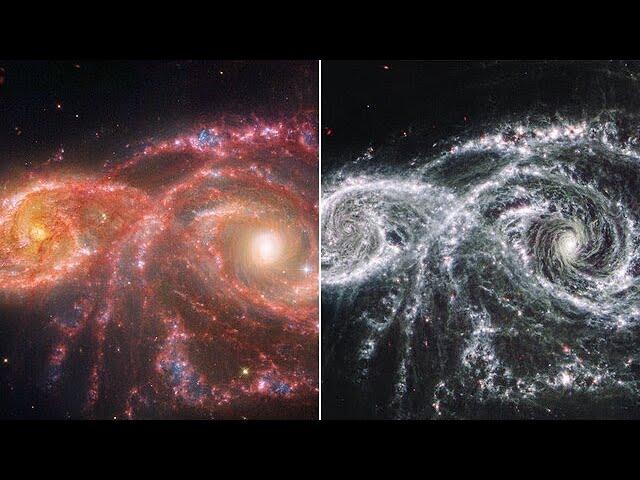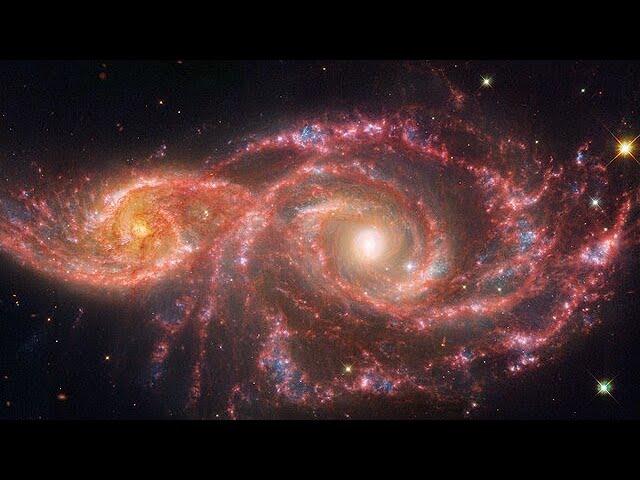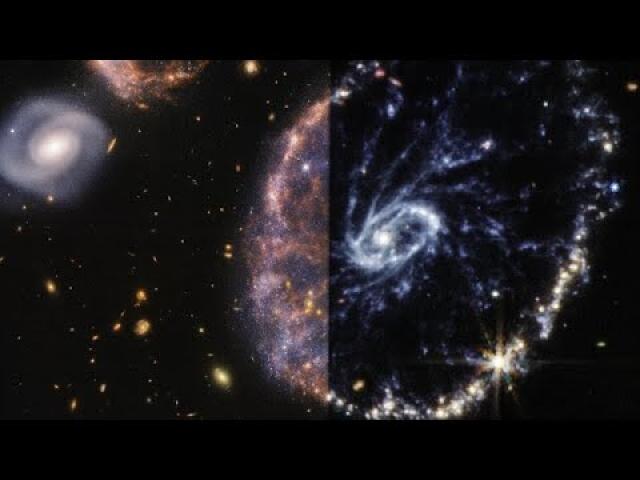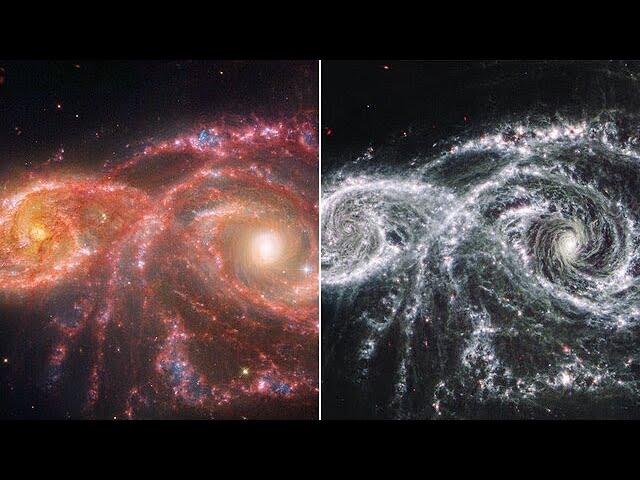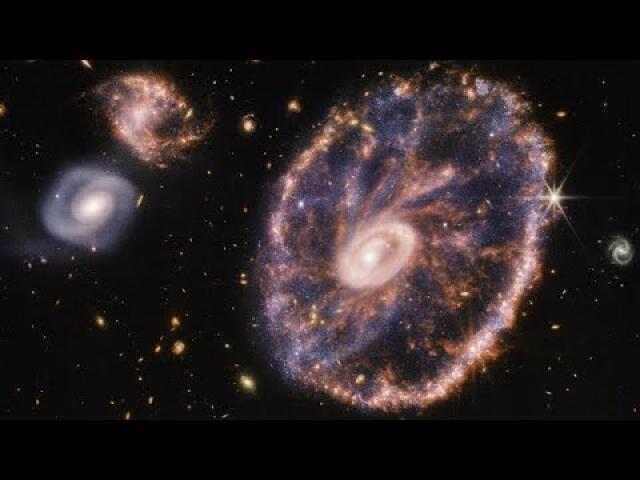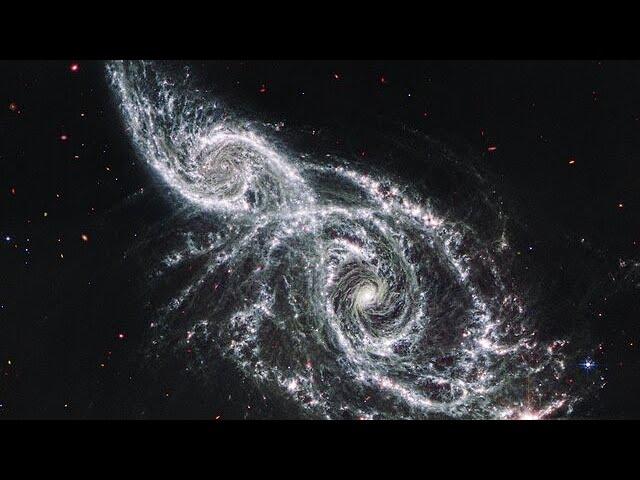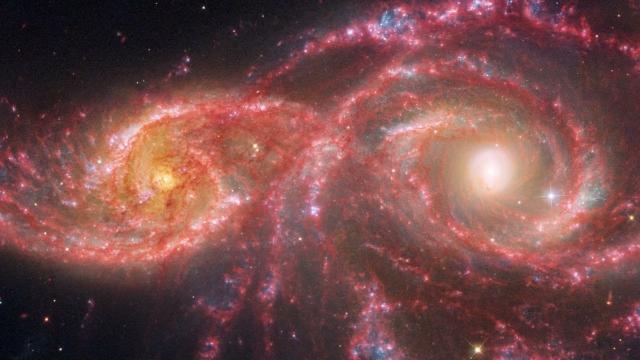Pan video: NGC 2207 (Webb MIRI image)
Description
The James Webb Space Telescope’s mid-infrared image of galaxies IC 2163 and NGC 2207 recalls the iciness of long-dead bones mixed with eerie vapours. Two large luminous ‘eyes’ lie at the galaxies’ cores, and gauzy spiral arms reach out into the vast distances of space.
Webb’s mid-infrared image excels at showing where the cold dust glows throughout these galaxies — and helps pinpoint where stars and star clusters are buried within the dust. Find these regions by looking for the pink dots along the spiral arms. Many of these areas are home to actively forming stars that are still encased in the gas and dust that feeds their growth. Other pink dots may be objects that lie well behind these galaxies, including extremely distant active supermassive black holes known as quasars.
The largest, brightest pink region that glimmers with eight prominent diffraction spikes at the bottom right is a mini starburst — a location where many stars are forming in quick succession. Find the lace-like holes in the spiral arms. These areas are brimming with star formation.
Finally, scan the black background of space, where objects shine brightly in a rainbow of colours. Blue circles with tiny diffraction spikes are foreground stars. Objects without spikes are very distant galaxies.
More information and download options: http://esawebb.org/videos/weic2426b/
Credit:
NASA, ESA, CSA, STScI, N. Bartmann (ESA/Webb)
Music: zero project - The Lower Dungeons

